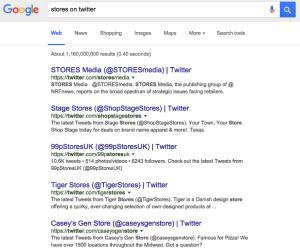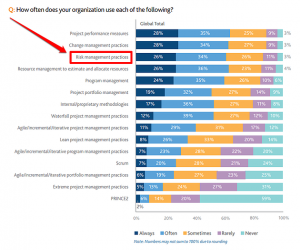Mobile optimized web sites are essential to succeeding as an online brand.
The mobile-first world defines modern internet consumption culture. Google coined and champions the term: “mobile-first.” The compound simply iterates our evident obsession with mobile devices.
We compartmentalize our issues, goals, and desires with apps. The rush and chemical reward of a new text message, like, or any other sound or vibration provoking signal drive us instinctually towards our phones. We prioritize mobile experiences.
Being mobile means being a part of modern civilization. Personally, we’re in tune with mobile communications. Social media, music, entertainment, and any other service or product all cater to and optimize for mobile experiences.
However, there’s a shocking disconnect as we stray away from the personal and into the commercial.
Many businesses—small to large—do not have mobile optimized online experiences.
Mobile Optimized 2016:
Companies which retail products in physical locations, but do not have a mobile-friendly website, cripple themselves as “82% of smartphone users turn to their devices to help them make a product decision” in stores (Google & Ipsos Data, March 2015).
Additionally, poor mobile experiences may even drive your customers to competitor’s locations where deals and reviews are easily accessible.
Do not think that a non-eCommerce company gets off lightly without a mobile friendly website. Not only does usability affect customer and client impressions of your services and aptitude but it also factors into your search engine rankings.
Google, in what was known as “Mobilegeddon,” incorporated mobile friendliness into its ranking algorithm, meaning mobile optimized sites rise and non-optimized sites fall on the search results page.
Further, businesses directing mobile traffic to their websites through paid means whether social, search engine, display or otherwise, waste advertising dollars when visitors arrive on poorly optimized sites and leave from usability issues alone.
Additionally, because your websites rank poorly on the mobile scale, your ad’s quality scores will be reduced and you’ll be paying more for clicks to compete in the ad auction.
In fact, not having a mobile-friendly site is good for your competitors because:
- 36% of people feel like their time is wasted by bad mobile experiences
- 48% of people said that a bad mobile experience meant a company didn’t care about their business
- 50% of people said that even if they liked a business, they would use them less often if the site wasn’t mobile-friendly
More Google searches take place on mobile devices than on computers in 10 countries including the US and Japan because so many people use smartphones.
A lot of these mobile searches are for products and services. Are your ads showing up?
More People Shop Mobile:
As early as 2013, a comScore study, reported by Internet Retailer stated that 55% of all time spent with online retail occurred on a mobile device
In 2014 Shopify announced that mobile users accounted for 50.3% of all of its eCommerce traffic.
And in 2015, Amazon reported that nearly 70% of holiday season shoppers used mobile devices.
Google further reiterates the importance of mobile in winning “I-want-to-buy” moments with customers. If you want to win “I-want-to-buy” moments, you need to be available when a customer searches on their mobile device, but you also have to be useful.
If you’re marketing eCommerce to mobile users, you better have a mobile website design that works or you’re going to be wasting ad spend. Potential customers interested enough to click your ads will be turned away by a poor mobile experience.
You work hard to make your business an inviting place, think of your visitor’s mobile experience like a physical visit to your office or store.
More importantly, a lot of people look for your physical location on their mobile devices too.
Local Business Is Mobile:
2016 Google search data shows that 30% of all mobile searches are related to location. There’s also been a 30% increase in mobile searches for “where to buy/find/get.” Additionally, mobile searches for “stores open now” and “food open now” have increased by over double in the past year.
Interestingly, Google finds that 76% of people who search for something on their smartphones visit a business within a day. 28% of these people end up purchasing from somewhere nearby.
Brick & mortar businesses can benefit incredibly from mobile optimized websites because they’re the businesses that’ll show up in local searches where 74% of consumers begin their shopping process.
This is because 69% of consumers expect a business to be within 5 miles or less of their location.
Google Punishes Unoptimized Websites:
Now it’s technical. Google doesn’t want to bring its mobile users to non-mobile-friendly websites. So when a smartphone user does a search, Google champions the mobile-friendly and punishes the unfriendly.
Firstly, Google marks out the good from the bad by giving a “mobile-friendly” tag to mobile results that fit their standards.*

Secondly, Google’s mobile-friendly ranking algorithm rewards mobile optimized websites with increased visibility in the mobile search results. The introduction of this algorithm, “Mobilegeddon,” meant that competitive businesses looking to capture the vast amounts of mobile search traffic would have to ensure a mobile-friendly experience.
This means that any business who isn’t mobile-friendly will be pushed down the mobile search results page.
Thirdly, having poorly mobile optimized landing pages for your PPC ads will result in lower quality scores, meaning you’ll have to pay even more to get your ads into visible search rankings.
*Note that in August 2016 Google announced that it would be dropping the mobile-friendly label to declutter the search results. We suspect that this will actually make mobile search results even more mobile-friendly as limited space is freed up. The mobile-friendly algorithm is still in place.
Digital & Social Articles on Business 2 Community(47)
Report Post






